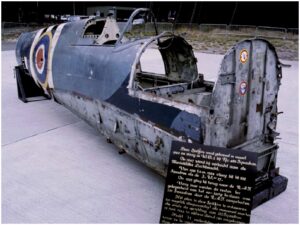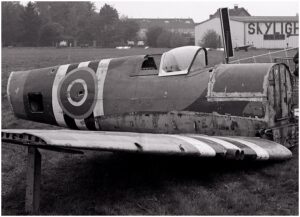HISTORIE
De Koninklijke Luchtmacht Historische Vlucht is voortgekomen uit de door een groep voormalige jachtvliegers van de Koninklijke Luchtmacht en Koninklijke Marine in 1969 opgerichte Stichting Vliegsport Gilze-Rijen. Met toestemming van de toenmalige commandant werd op de vliegbasis Gilze-Rijen een hangaar gebouwd waarin een Harvard en een Piper Super Cub zijn gerestaureerd. Doel was het starten van een voortgezette opleiding van sportvliegers. In de jaren die volgden zijn verschillende historische vliegtuigen aan de vloot toegevoegd, met zorg gerestaureerd en in luchtwaardige conditie gebracht. Vanaf 1976 legt de KLuHV zich toe op het in luchtwaardige staat brengen en houden van propellervliegtuigen die in het verleden in gebruik zijn geweest bij de Koninklijke Luchtmacht.
De SKHV heeft met haar vliegtuigen, meest Harvards die waren omgebouwd tot het uitbeelden van andere types, deelgenomen aan een reeks films en documentaires zoals ‘Waakzaamheid, de prijs voor de Vrede’, ‘De Aanslag’, ‘Soldaat van Oranje’, de musical ‘Joe’ en niet te vergeten ‘A Bridge Too Far’ waarvan hieronder een gedeelte te zien is.
In 1998 is de Gilze Rijen Historical Flight samengegaan met de Dutch Spitfire Flight. Deze laatste stichting was er in geslaagd in 1993 een Spitfire luchtwaardig te maken en opereerde dit vliegtuig, samen met de Beaver, vanaf vliegbasis Soesterberg. De nieuwe organisatie ging verder onder de naam Stichting Koninklijke Luchtmacht Historische Vlucht.
In 2004, tijdens het 35 jarig jubileum van de historische luchtvaart op Gilze Rijen, is het samengaan met de Duke of Brabant Air Force aangekondigd. Dit fusieproces is afgerond in 2010 en sinds die tijd maakt het vlaggenschip van de DBAF, de B-25 Mitchell, deel uit van de vloot van de KLuHV.
In de afgelopen decennia is de KLuHV gegroeid tot een toonaangevend vliegend museum met een unieke collectie historische militaire propellervliegtuigen. De professionele en vrijwillige inzet van alle deelnemers én de gastvrijheid die de KLuHV geniet van de Koninklijke Luchtmacht maken dit mogelijk.



